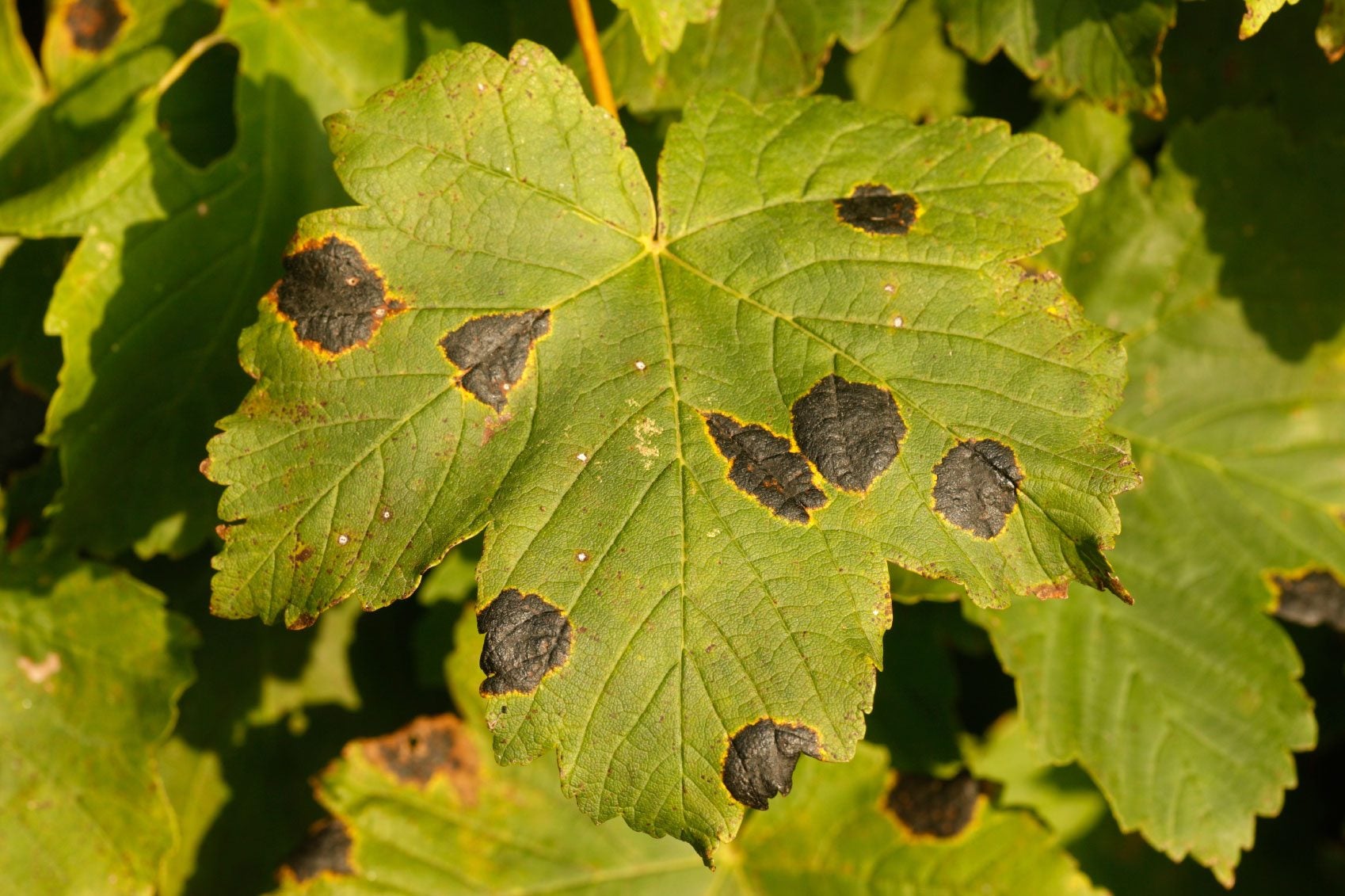Maple Tree Tar Spot - Managing Tar Spot Of Maples


Your maple trees are absolutely gorgeous yellow, orange, and red fireballs every fall-- and you look forward to it with a great deal of anticipation. When you discover that your tree is suffering from tar spot of maples, you may start to fear that it spells the end to beautiful fall scenery forever. Never fear, maple tree tar spot is a very minor disease of maple trees and you'll have plenty of fiery falls to come.
What is Maple Tar Spot Disease?
Maple tar spot is a very visible problem for maple trees. It starts with small yellow spots on growing leaves, and by late summer these yellow spots expand into large black blotches that look like tar has been dropped on the leaves. This is because a fungal pathogen in the genus Rhytisma has taken hold. When the fungus initially infects a leaf, it causes a small 1/8 inch (1/3 cm.) wide, yellow spot. As the season progresses that spot spreads, eventually growing up to 3/4 inches (2 cm.) wide. The spreading yellow spot also changes colors as it grows, slowly turning from a yellow-green to a deep, tarry black. The tar spots don't emerge right away, but are typically obvious by mid to late summer. By the end of September, those black spots are at full size and may even appear to be rippled or deeply grooved like fingerprints. Don't worry, though, the fungus only attacks the leaves, leaving the rest of your maple tree alone. The black spots are fairly unsightly, but they don't do any harm to your trees and will be shed when the leaves fall. Unfortunately, maple tree tar spot is spread on the wind, which means that your tree can get re-infected next year if spores happen to hitch a ride on the right breeze.
Maple Tar Spot Treatment
Due to the way maple tar spot disease is transmitted, complete control of maple tar spot is virtually impossible on mature trees. Prevention is the key with this disease, but if nearby trees are infected, you can't reasonably expect to totally destroy this fungus without community support. Start by raking all your maple's fallen leaves and burning, bagging, or composting them to eliminate the closest source of tar spot spores. If you leave the fallen leaves on the ground until spring, the spores on them will likely re-infect the new foliage and start the cycle again. Trees that have trouble with tar spots year after year may also be struggling with excessive moisture. You'll do them a great favor if you increase the grade around them to eliminate standing water and prevent moisture build-up. Young trees may require treatment, especially if other trees have had a lot of their leaf surfaces covered by tar spots in the recent past. If you're planting a younger maple in an area prone to maple tar spot, though, applying a fungicide, like triadimefon and mancozeb, at bud break and twice again in 7 to 14 day intervals is recommended. Once your tree is well-established and too tall to easily spray, it should be able to fend for itself.
Sign up for the Gardening Know How newsletter today and receive a free copy of our e-book "How to Grow Delicious Tomatoes".

Kristi Waterworth was a regular contributor to Gardening Know How for many years, answering countless queries on plant pests and diseases.